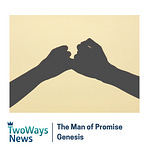For those who haven’t caught up with this, I started a new role in January this year at Campus Bible Study, working as a ministry trainer about 40% of my time, with the rest of my week spent writing things like The Payneful Truth and new ministry resources.
The student ministry at CBS was where nearly everything started for me, back in the 1980s. It’s where I learned what it meant to be an evangelical Christian; it’s where I learned most of the foundational theological and ministry truths that still drive me; it’s where Matthias Media started, and more besides.
Today’s post reflects on some lessons I’ve already learned from nine months back with the young people.
Back to School
Let’s just say that it’s been an interesting year to be back in campus ministry at the University of NSW—for all the reasons you can imagine.
For a man like me, just entering middle age (58 being the new 40), developing good rapport and engagement with a training group of first year students is enough of a challenge. Trying to do that over Zoom? Tricky.
For one thing, I’ve had to learn to avoid the Middle-aged Technology Squint—leaning in to the screen, head tilted slightly back to engage the multifocals, mouth ajar, brow furrowed, puzzled eyes scanning for options. Not a rapport builder.
And I’ve also generally steered away from references to Rodney Dangerfield’s character in the screwball comedy Back to School, because although a bit of self-mockery always goes down well, there’s nothing worse than the old guy whose idea of pop culture is stuck in 1986.
On the whole, though, diving back into Campus Bible Study (CBS) after all these years has been every bit as refreshing as I hoped it would be. It’s not only the uncluttered and infectious enthusiasm of the students and apprentices. It’s been an opportunity to go back to where most of my views about ministry were formed, and to re-engage with them—but in a new millennium, in a new culture (the campus is a very different place demographically now), and after having spent around 30 years in parish-land. Back to school, you might say.
The contrast between parish and campus is something of a cliche. I can’t say how many times I’ve heard it said: “Yes, well, that might work on campus, but not out here in the real world”. And (like all cliches) there is truth in it. Students have relatively uncomplicated lives, are self-selected for intellectual ability, and have plenty of time and energy—all of which does make a material difference to the kinds of activities or structures you can run, and how quickly you can achieve certain things. Things are different in parish-land. But is the fundamental theology of ministry that should drive us any different?
Not if it is theology, as opposed to certain models or activities or structures. Models and activities and structures can and must change as circumstances change; but the theological convictions that drive ministry shouldn’t change (unless they are mistaken). You might say that trellises need to be constantly renewed and reinvented, and can take a multitude of forms; the vine remains the same kind of organism.
One of the reinvigorating joys of being back on campus after all these years is to discover that the CBS vine really hasn’t changed. The theological culture of ministry that the staff team is working to spread and cultivate is largely as it was when I left over a quarter of a century ago, and largely what I have continued to teach and spread ever since. But coming back to school after all this time has also challenged my convictions—or at least, the degree to which I have been consistently practising them in the intervening years.
In this post (and in a few others forthcoming), I’d like to reflect on some aspects of the CBS ministry culture that have been particularly striking to me—coming back to it after all this time. The purpose is not to praise CBS or its leadership (who will very quickly tell you that the jars of clay in our ministry are as full of chips and cracks as everywhere else), but to share some old lessons I am learning afresh, in the hope that it will stimulate you to do the same.
The first is very simply that the Bible itself is the textbook, the exercise book and the curriculum for everything that happens in this particular ‘school’. We all know that the Word is central, and must drive all we do, but I’ve found it refreshing to see just how deeply that conviction penetrates what happens in the ministry at CBS. It’s seen in multiple things: in the prominence and seriousness of the weekly Bible expositions; in the trouble that is taken to train the students in how to read the Bible, and to lead others in doing that in small group discussion; and in the prevalence of one-to-one Bible reading (more on which below).
Surprisingly (to me) it’s also reflected in the pervasive presence of physical Bibles. I fully expected all these millennials to be thumbing their phones at Bible reading time. But instead, nearly all the students and apprentices and staff pull out well-thumbed print Bibles and set to work. I’m not sure I’ve heard so much rustling of pages in years.
As far as I can tell, there’s no paragraph in the staff manual on this; no policy that is enunciated. It’s just part of the culture that newbies very quickly pick up. And the benefits are surprising, as Matt Smith (a CBS grad) has noted in a recent article: the improved sense of context you get from a print Bible, the lack of distraction, and the benefits for comprehension and retention of reading a physical book. But there’s also an intangible cultural benefit—the actual presence of this book in our midst, the Word that is supposed to dwell among us richly, always at hand, always being flipped open, a constant agenda-setting presence in every meeting and relationship.
Which brings me back to one-to-one Bible reading. Is it my imagination, or was this something that many churches were actively seeking to promote a decade or two ago? I’m sure it was. I don’t know if it ever took off in your part of the world, but in my circles I can’t remember the last time I heard someone even mention it.
And yet coming back to CBS, and seeing how widespread and beneficial the practice is, I can’t help wondering why interest in it seems to have waned in parish-land. Did we make the mistake of thinking of one-to-one Bible reading as a particular structure or model—perhaps that sought growth by organizing people into discipleship pairs, offering training, multiplying those pairs, and so on?
That way of organizing things may or may not be suitable or effective where you are. But the theological ministry principle of one-to-one Bible reading is simply this: that when Christians encounter one another or meet together personally (whether casually or regularly), and seek to encourage or exhort or instruct or comfort one another, then the Scriptural Word should be at the centre of our conversation. The Bible is the content of our mutual encouragement and exhortation. Opening it, reading it and sharing it together is the surest and simplest way to ‘speak the truth in love’ to one another, for the growth of the body.
One thing I’ve been reminded of back on campus is that opening the Bible with other people is not so much a program or a model, but a habit, a way of life, a cultural norm—and once established, it works its way into every relationship and meeting and encounter. Are you at the point of talking seriously with a friend about your faith? Offer to read the Bible with them. Want to catch up with someone in your small group for coffee, and to encourage them? Pull out the Bible at some point, and mull over some of God’s truth together. Catching up with a ministry staff member to talk about how things are going? Read a few verses in Greek together before you do anything else.
Now, you might say, that sounds wonderful, but how does one establish regular interpersonal Bible reading as a ‘cultural norm’—when in our particular ministry (for whatever reason) it just doesn’t feature?
Well that brings me to another issue I’ve been reflecting on back at school—the power of patient culture-building. But that’s a subject for next time.
PS
This is one my free public posts for everyone on the list (every three weeks or so). Hope you enjoyed it, and feel free to share it around. If you’d like to become a partner and get every edition, every week, here’s two things you can do.
First, you could hit the button below, and sign up for one of the partnership plans (most people seem to be going for the $70 a year option). I don’t pretend that it’s particularly good value: you can read lots of stuff for free all over the internet! But Christians are into partnership. We like to support people who doing work we value—and so if you think this newsletter and the writing ministry I’m doing more broadly is worthwhile, you can partner with me in it by chipping in a small amount. And I’d be very grateful.
Or second, if you’d really like to be part of the weekly conversation, but don’t have the means at present to be a partner, just send me a quick email at tonyjpayne@me.com, and I’ll give you a 12 month free membership. No sweat.
And this week’s image is of course the bug-eyed Rodney Dangerfield from Back to School—the story of a middle-class, obnoxious old guy who goes back to college, and causes havoc. I’m hoping that’s not my story.











